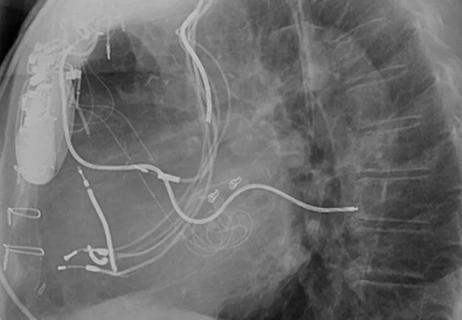Check out our latest data in these core cardiovascular areas
Below we share recent volumes and clinical outcomes from two programs in Cleveland Clinic’s Heart, Vascular and Thoracic Institute: heart failure and recovery, and electrophysiology and cardiac pacing.
Advertisement
Cleveland Clinic is a non-profit academic medical center. Advertising on our site helps support our mission. We do not endorse non-Cleveland Clinic products or services. Policy
EP lab procedure volume, 2020-2024
EP lab procedure volume in 2024, highest annual total to date
Lead extraction procedures, 2020-2024
Clinical success rate for lead extractions
In-hospital mortality, vs. benchmark of 1.2% (Kusumoto et al., Heart Rhythm. 2017)
Atrial fibrillation ablations, 2020-2024
Major complication rate, vs. benchmark of 2.5% (Hsu et al., J Am Coll Cardiol. 2023)
Ventricular arrhythmia ablations, 2020-2024
Major complication rate, vs. benchmark of 10% (Cronin et al., Heart Rhythm. 2020)
Watchman™ and Amplatzer Amulet™ devices placed for LAAO procedures (includes both EP and interventional cases), 2020-2024
Major complication rate within 7 days of LAAO device implant, vs. benchmark of 2.7%-8.7% in published trials (Boersma et al., Eur Heart J. 2016)
Number of heart transplants, including 2 pediatric cases
Number of left ventricular assist device (LVAD) implantations
Number of patient referrals for advanced heart failure
| Time frame | Cleveland Clinic | U.S. benchmark |
|---|---|---|
| At 1 year | 96.9% | 92.2% |
| At 3 years | 89.0% | 84.7% |
| Time frame | ||
| At 1 year | ||
| Cleveland Clinic | ||
| 96.9% | ||
| U.S. benchmark | ||
| 92.2% | ||
| At 3 years | ||
| Cleveland Clinic | ||
| 89.0% | ||
| U.S. benchmark | ||
| 84.7% |
Number of LVAD implants over the past 3 years, among the highest in the U.S.
1-year post-implant survival, primary LVADs (vs. 87.1% STS Intermacs survival) (for period 7/1/23-12/31/24)
1-year post-implant survival, continuous-flow LVADs for destination therapy (vs. 85.0% STS Intermacs survival) (for period 7/1/23-12/31/24)
| Time frame | Cleveland Clinic | STS Intermacs |
|---|---|---|
| 12 months | 85.8% | 83.0% |
| 48 months | 61.2% | 56.3% |
| 60 months | 53.3% | 48.6% |
| Time frame | ||
| 12 months | ||
| Cleveland Clinic | ||
| 85.8% | ||
| STS Intermacs | ||
| 83.0% | ||
| 48 months | ||
| Cleveland Clinic | ||
| 61.2% | ||
| STS Intermacs | ||
| 56.3% | ||
| 60 months | ||
| Cleveland Clinic | ||
| 53.3% | ||
| STS Intermacs | ||
| 48.6% |
Cleveland Clinic’s Heart, Vascular and Thoracic Institute has a long tradition of reporting volume and outcomes data across various subspecialty areas. For more information like the data above, visit clevelandclinic.org/hvtioutcomes and clevelandclinic.org/e15.
Advertisement
Advertisement

Freely accessible LEADconnection.org is a one-stop shop for advice and more

Ideation session generates solutions to medication administration errors

Caregivers spearhead changes that improve patient care, shape hospital culture

Multidisciplinary care can make arthroplasty a safe option even for patients with low ejection fraction

Findings could help clinicians make more informed decisions about medication recommendations

Experts are challenging the one-size-fits-all paradigm

Initiative generates new ideas for improving efficiency, eliminating waste

High-risk procedure prepares patient for lifesaving heart surgery